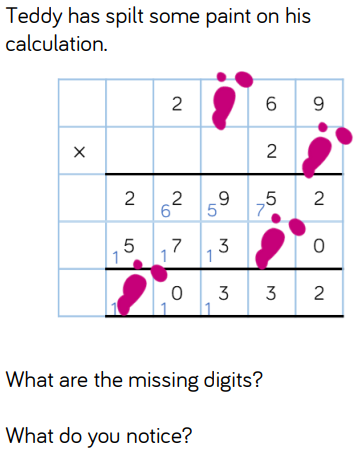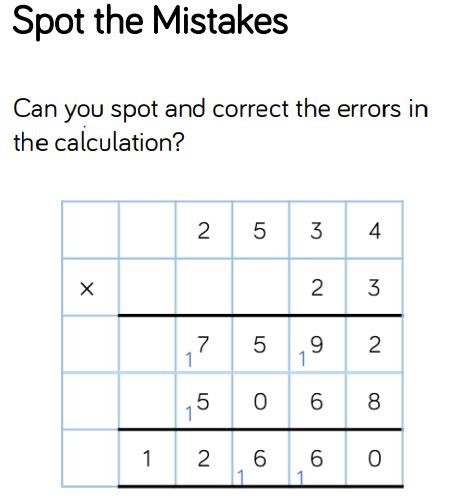Maths
Intent
Mathematics is at the core of our curriculum and it is through our teaching in this subject that pupils learn crucial life skills, including resilience and problem solving. They also have opportunities to lead, teach, support and mentor each other. Based on the National Curriculum and a model by the White Rose Maths Hub, we are ensuring children gain an in-depth understanding of maths by teaching fluency, reasoning and problem solving on the children's journey to mastery of the curriculum. Depth not acceleration... The old curriculum, measured in terms of levels, encouraged undue pace. Children were accelerated onto more complex concepts before really mastering earlier ones. The new curriculum, and the teaching of Maths at Queen Eleanor’s, encourages the study of fewer skills in greater depth, with a focus on the application of the skill in different scenarios. This is what we call mastery. Teaching methods in maths today are very different to how many adults were taught. Now we try to help the children understand 'why', rather than just telling them 'how'. In this way, the children will be much better placed to apply their learning in a variety of situations.
Implementation
There are three elements that are critical on the journey towards mastery that we aim to develop in our children - Fluency, Reasoning and Problem Solving. Without one, the next cannot follow and it is only by developing these three skills that children can move towards mastery. Each of the daily maths lessons are differentiated through the use of support and extending prompts.
If you would like to find out more about Queen Eleanor's mastery approach to maths, click on the link below which will take you to a parent workshop led by our maths subject leader explaining how it works at QE.
Fluency
The first aim of the National Curriculum in England (DfE 2014) is that all children will 'become fluent in the fundamentals of mathematics, including through varied and frequent practice with increasingly complex problems over time, so that pupils develop conceptual understanding and the ability to recall and apply knowledge rapidly and accurately'. As this suggests, fluency is the ability to know different mathematical strategies and to understand how to use them at an appropriate time.
Here is an example of fluency in action for the Year 5 objective ‘multiplying 4-digit numbers by 2-digit numbers:
Reasoning
The second aim of the National Curriculum is that all children can 'reason mathematically by following a line of enquiry, conjecturing relationships and generalisations, and developing an argument, justification or proof using mathematical language'. Reasoning is a child's ability to explain their understanding of a mathematical concept. In being able to articulate their knowledge, a child is building a secure understanding of a concept, rather than a superficial one which may later lead to misconceptions.
Here is an example of reasoning in action for the Year 5 objective ‘multiplying 4 digit numbers by 2 digit numbers’:
Problem solving
The third aim of the new National Curriculum is that all children 'can solve problems by applying their mathematics to a variety of routine and non-routine problems with increasing sophistication, including breaking down problems into a series of simpler steps and persevering in seeking solutions'. This is where children are applying their knowledge in different contexts, which enables a greater depth of learning.
Here is an example of problem solving in action for the Year 5 objective ‘multiplying 4 digit numbers by 2 digit numbers’:

The concrete-pictorial-abstract approach
In order to help the children develop a deep conceptual understanding, we try to build solid foundations using the concrete-pictorial-abstract approach.
Concrete: In this stage, the children are first introduced to an idea or skill by acting it out with real objects. For example, in division this might be done by separating balls into colour groups.
Pictorial: When a child has sufficiently understood the hands-on experiences, they can progress to relating them to different representations, such as a diagram or picture of the objects. With our division example, this could be done by the action of circling groups of objects.
Abstract: This is the symbolic stage, where the children are able to represent problems using mathematical notations e.g. 10÷5=2. The children will only progress to the abstract stage when they have enough context to understand what they mean, as this is the 'final' and most challenging of the three stages.
If you would like to learn more about how we teach calculations, click on the link below to watch a recording our maths subject leader leading a parent’s workshop on this in 2021
You can also download the school’s calculation policy at the bottom of this page.
Impact
Mathematics is essential to everyday life, critical to science, technology and engineering, and necessary for financial literacy and most forms of employment. A high-quality mathematics education therefore provides a foundation for understanding the world, the ability to reason mathematically, an appreciation of the beauty and power of mathematics, and a sense of enjoyment and curiosity about the subject. To help the children make these links with maths and other areas of the curriculum, Queen Eleanor’s promotes ‘Maths Moments’ in class where the children are encouraged to make the links between maths and other curriculum subjects. Also, once a term, the class teacher nominates one child from the class to be their ‘Mathemagican’. The teacher chooses any reason why the child has been nominated, ranging from amazing progress to outstanding effort.
During the children's time at Queen Eleanor's, their mathematical skills are progressed over time using the White Rose Schemes of learning. If you would like to look at this in more detail (as well as what topics are covered when in each year group), attached at the bottom of this page is the National Curriculum Progression and 'Ready to Progress' mapping document from White Rose Maths that Queen Eleanor's uses.
Parental Involvement
Parents often ask how they can best support their child's learning in maths when the methods we teach are so different to those they are familiar with from their own schooling. We would like our parents to demonstrate a positive attitude towards maths and to be 'cheerleaders' when supporting their children in practising and consolidating skills. We also run an annual parents calculation evening where the maths subject leader will show the parents the different methods we use. Maths homework will for the most part reflect the in-class learning of the week. Applying maths in as many real-life contexts as possible is a vital part of home learning and we appreciate you taking the opportunities when 'out and about' to apply the children's learning.



